Among Python’s data processing libraries, NumPy is undoubtedly the most fundamental and powerful. Today, we will discuss how to use NumPy for complex data operations to help everyone better master this powerful tool.
As a library that supports efficient array operations, NumPy has significant advantages when handling large-scale data and performing mathematical calculations.
1. Basic Introduction to NumPy
NumPy (Numerical Python) is an open-source Python mathematical library that primarily provides a powerful multi-dimensional array object called ndarray, along with a large number of mathematical functions and operations.
Compared to Python’s built-in lists, ndarray offers a more efficient storage and computation method, especially when performing large-scale data operations, making NumPy particularly important.
The advantages of NumPy arrays compared to lists are as follows:
Faster speed: NumPy arrays store data in contiguous memory blocks, making computation significantly faster than Python’s native lists.
Rich functionality: NumPy provides a wealth of mathematical and statistical functions, allowing you to easily handle various mathematical computation tasks.
Multi-dimensional data structures: NumPy arrays support not only one-dimensional arrays but also two-dimensional, three-dimensional, and even higher-dimensional arrays.
2. How to Use NumPy for Data Operations
1. Creating NumPy Arrays
When using NumPy, the first step is to create an array.
You can create NumPy arrays from Python objects like lists or tuples using np.array(), or directly generate arrays using functions like np.arange() and np.linspace().
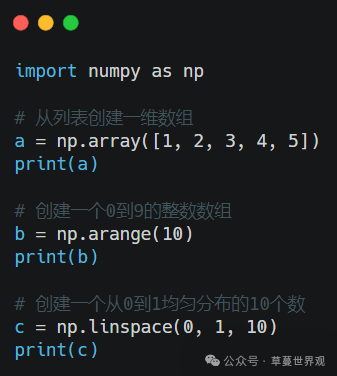
2. Array Shape and Dimension Operations
NumPy arrays support high-dimensional data, and you can easily perform shape and dimension transformations. You can change the shape of an array using the reshape() method and perform transposition using transpose().
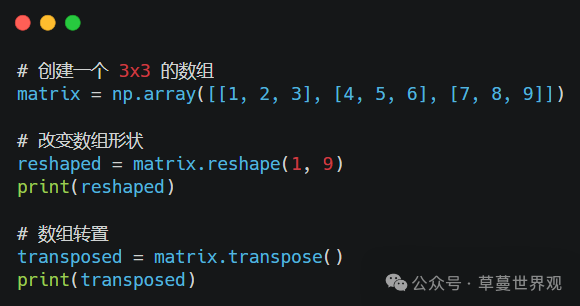
3. Array Slicing and Indexing
Similar to Python lists, NumPy arrays support powerful slicing operations. You can use : to select a portion of the array and even perform complex conditional indexing.
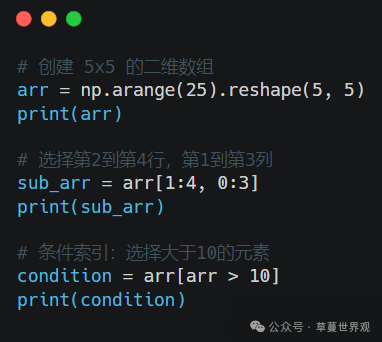
4. Mathematical Operations on Arrays
A major highlight of NumPy is its support for vectorized operations, meaning you can perform addition, subtraction, multiplication, and division directly on entire arrays without using loops. This makes the code cleaner and more efficient.
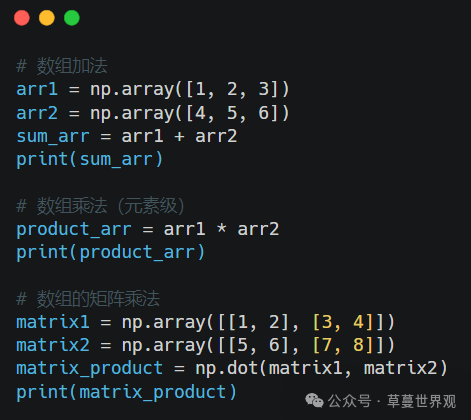
5. Common Mathematical Functions
NumPy provides a rich set of mathematical functions for various mathematical operations on arrays, including addition, multiplication, summation, maximum, mean, and more.
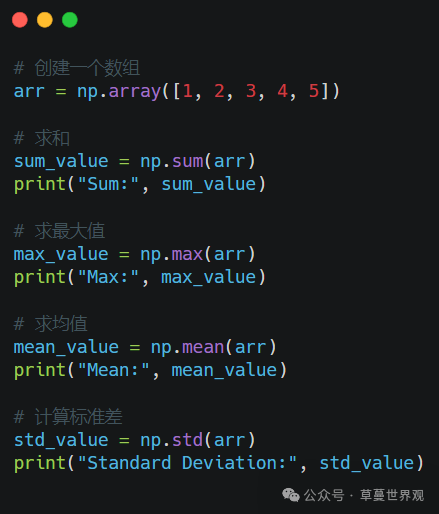
6. Broadcasting
Broadcasting is a powerful concept in NumPy that allows you to perform operations between arrays of different shapes without explicitly matching their shapes.
When the shapes of the arrays are not exactly the same but have certain compatibility, NumPy automatically adjusts the shapes of the arrays to allow the operations to proceed.
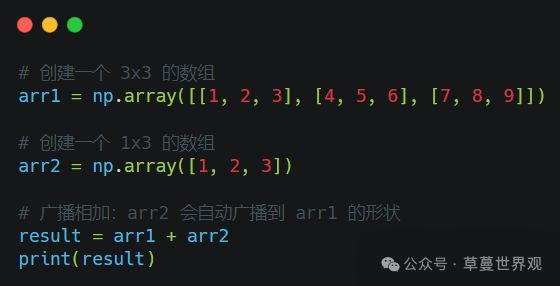
3. Advanced Applications of NumPy
1. Linear Algebra Operations
NumPy provides a powerful linear algebra module that helps us perform matrix operations, inversions, eigenvalue decompositions, and more. This is crucial for algorithms in machine learning and deep learning.
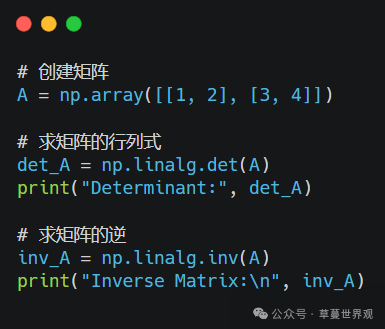
2. Random Number Generation
In data science, it is often necessary to generate random numbers for simulation, modeling, or validation. NumPy provides a powerful random number generation module, np.random, which can generate random numbers from various distributions.
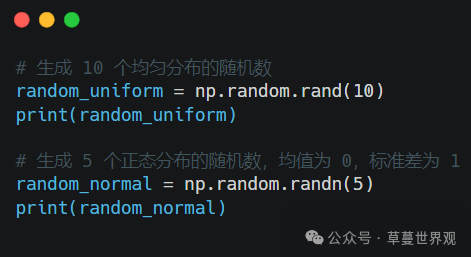
4. Conclusion
In today’s article, we introduced the basic operations of NumPy, array creation and slicing, common mathematical operations, and some advanced applications such as linear algebra and random number generation.
We hope this article helps you better understand and use NumPy, making your Python data operations more efficient and convenient.